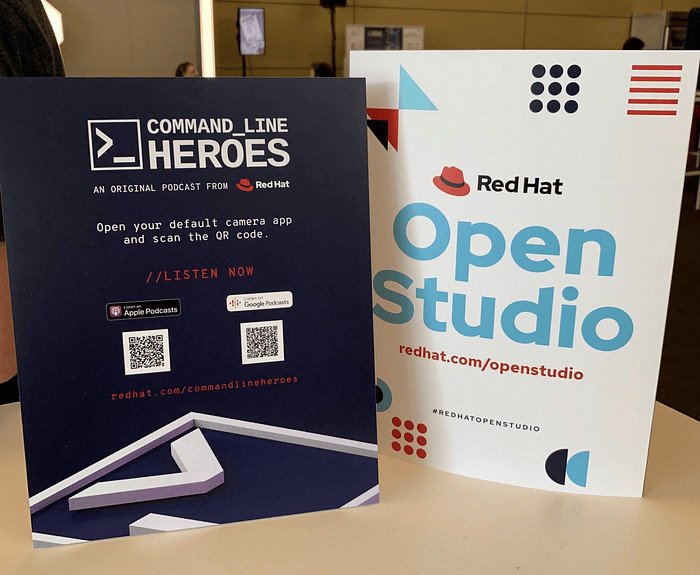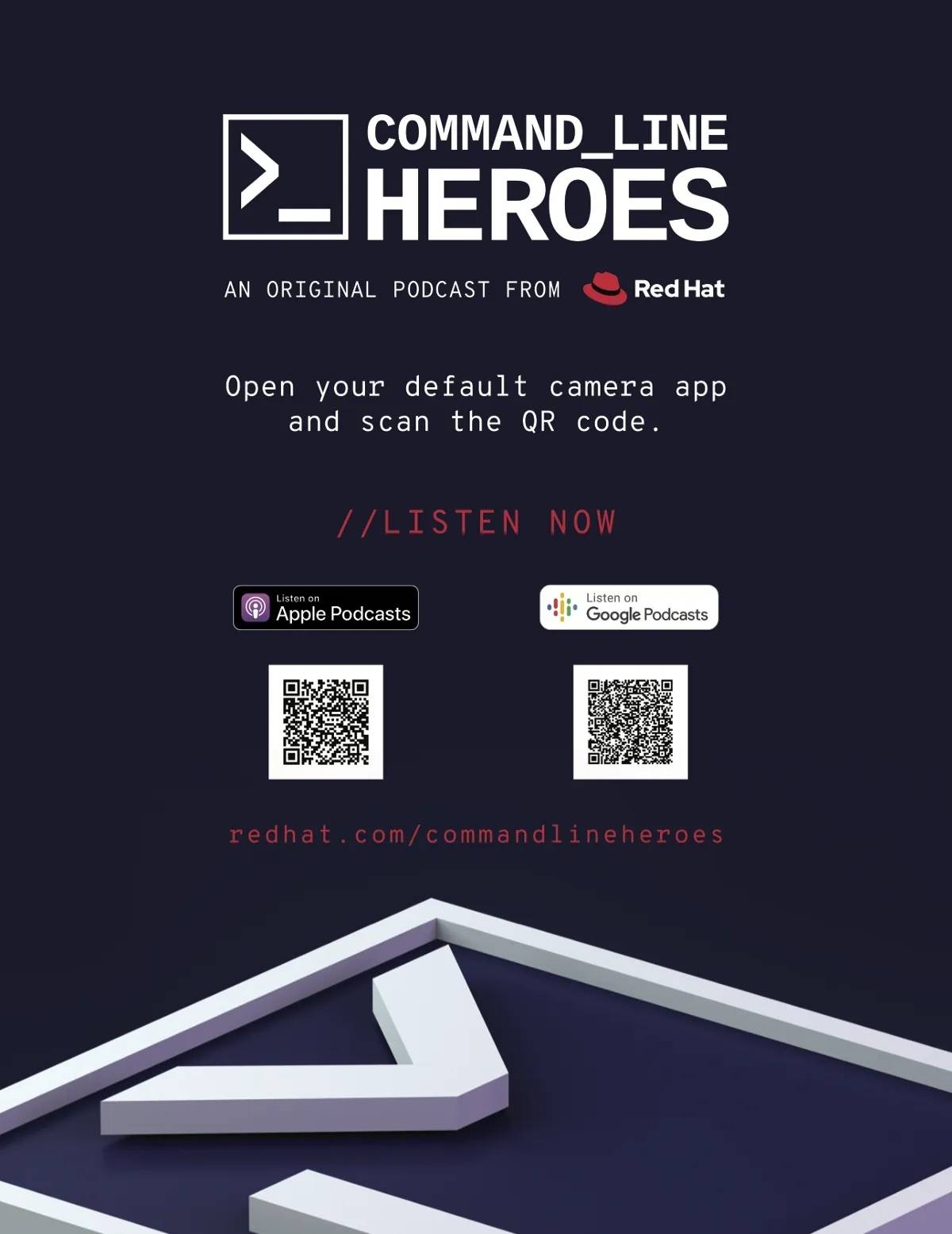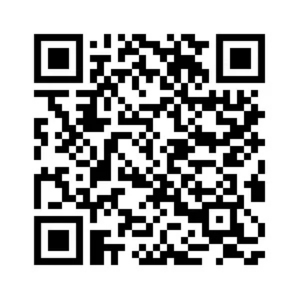QR Codes and Helpful Humans: How Red Hat Builds Podcast Audiences at Live Events

Word of mouth is powerful.
Personal recommendations are golden.
Genuine enthusiasm for a terrific show show is contagious.
Podcasts are primarily a digital medium, but there are plenty of analog onramps for new listeners. Events, conferences, and conventions can be effective places to reach the large segment of the population that doesn’t listen to podcasts regularly, and grow the pie for everyone.
The team behind Red Hat’s Command Line Heroes has done an amazing job promoting their podcast at live events through a mix of smart in-person activations. I recently talked to Victoria Lawton, Marketing Resource Manager at Red Hat, all about how the team encouraged podcast listening at Red Hat Summit.
Dan Misener: Tell me about the Command Line Heroes podcast presence at Red Hat Summit 2019.
Victoria Lawton: Command Line Heroes wanted to provide a fun, entertaining experience for everyone at Red Hat Summit. We brought in open source video games on custom-built arcade cabinets, had tons of free swag, and had a caricature artists drawing attendees as command line heroes while they were being interviewed.
What were your podcast-specific goals for Summit?
The Command Line Heroes team sets goals for our events in two ways. One is to learn what people are interested in so that we can make our future editorial better. The second goal is to help new audiences find the show, which is measured in episode downloads, traffic to podcast platforms, and traffic to our website.

How did you use QR codes to promote the podcast?
We used an easel sign at our reception counter at Summit. We wanted it to be as easy as possible for people to find the show if they seemed interested after chatting with the team.
How did people respond to the QR codes?
The overall response was positive. Many people were surprised to learn their phones were able to read QR codes without a separate app installed. They also made it a lot easier for people to directly access the podcast in a podcast platform. As a result, I think we had more interest in the podcast itself as well as more opportunities to quantify and measure that interest.
You used two different QR codes: one for iOS, and one for Android. How did that work out?
Our audience is very technical, with the majority using Android devices. It’s always important for us to provide more than one way to listen to the show. Using the QR codes, however, simplified the process so much — especially for people who don’t listen to podcasts. The QR code automatically brought up their pre-installed podcast app.
Was it important to have a human being nearby to help people use the codes?
Yes! The majority of attendees didn’t know the default camera app on their phones had a QR code reader built in. It was important for the team to show them how it worked as well as how to subscribe to a podcast. There were quite a few people who were interested in the show but hadn’t listened to podcasts before. Being in-person allowed us to describe the difference between downloading the show and subscribing. People also came back to tell us they liked the show.
What worked? What didn’t? What would you do differently next time?
The Command Line Heroes team attends many events and using the QR codes has made it the easiest for us to help introduce the show to new listeners. Using the QR codes with Apple Podcasts also made it more effective to measure behaviors by allowing us to track the number of clicks to the series page using the QR code.
We found some slight technical problems that I would correct for moving forward. For future events, I will make the QR codes bigger for easier scanning as well as adding additional markers for Android phones versus iOS devices so people could self-select more easily.
How else should podcast marketers think about building audience through offline activations?
I believe offline activations are so important to help new audiences connect to the show. As we’ve promoted the show, we’ve learned the importance of personal recommendations as there are so many shows available. Having the team there to connect people’s interests with specific episodes of the podcast gives them a personal entry point into the podcast. Offline activations don’t necessarily require recreating the podcast experience for a live show — it’s most valuable to connect with your audience in a meaningful way!
Remember
- Podcasts spread through word-of-mouth and personal recommendations
- Clear signage is essential, but a helpful human being is even better
- Most phones have a built-in podcast app, but not everyone knows that
- Lots of phones have built-in QR code readers, but not everyone knows that. Want to try it out? Open the default camera app on your phone, and point it at this code:

How do you market your show offline?
Sign up for the Pacific Content Newsletter: audio strategy, analysis, and insight in your inbox. Once a week.
